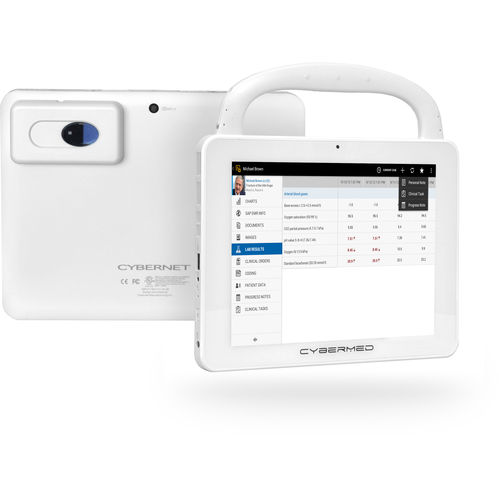
#Industry News
FOUR WAYS VIRTUAL PATIENT SITTERS HELP HOSPITALS MANAGE AT-RISK PATIENTS
Advantages on keeping eye on at-risk patients remotely
A virtual patient sitter allows hospital personnel to watch multiple at-risk patients simultaneously. Here’s how it works, and four major advantages over more traditional, flesh-and-blood sitters.
Virtual Patient Sitter – What Is It?
Patient sitters are a relatively unknown yet important part of healthcare, watching at-risk patients so staff members like nurses to focus on more pressing medical duties. Due to limited budgets and labor shortage of sitters, hospitals and other medical facilities are turning to technological solutions for answers.
Virtually patient sitting or telesitting is one of these. The technology can be described as a form of remote patient monitoring. A trained staff member (called virtual patient sitters, virtual patient observers, or telesitters) keeps an eye on patients deemed “at risk” through remote continuous video monitoring technology.
Multiple patients can be watched in this manner. Depending on the setup, patients may also see who the telesitter is via a medical grade monitor.
Most setups allow staff to speak and respond to patient requests (“I need water.”) They could also summon aid if at-risk behavior is noted and/or engaged. Examples include the patient is falling or pulling out their IV tubes.
Even more advanced telesitting setups allow monitoring of patient vitals.
Four Advantages of Virtual Patient Observation
There are many circumstances in medicine where providers and caregivers do not want to leave a patient alone. The patient may:
Be experiencing confusion and agitation
Present a fall risk
Engage in self-harm
Adult rehabilitation, behavioral health, ICU, post-op, and long-term care are just a few of the settings where medical staff may want a patient under some form of observation.
Those patients would be assigned a sitter, a person who keeps an eye on them as well as provide companionship. This is called “specialling.” Virtually sitting offers four distinct advantages:
Preventing Falls
Falls in healthcare facilities are quite common. This is especially true among the elderly, with the CDC reporting 36 million a year suffering from falls.
Broken bones, cuts, and internal bleeding are just some of the injuries suffered in a fall. Patients can be permanently maimed or even killed depending on the damage.
On-site staff or hired caregivers, acting as patient sitters, were originally assigned to watch and prevent such falls. Medical staff like LVNs and RNs may also be pulled into sitting duties as well.
Now virtual patient sitters are increasingly being used to provide continuous oversight. Studies on their use have shown them to be effective, with one showing falls decreasing by 51 percent across 11 hospitals.
Monitor Patient Vitals
Virtual patient sitting is usually thought to be monitoring patients to respond to any potential at-risk behavior. However, telesitting can also be applied to simply monitor data from the patient’s medical devices and equipment.
A perfect example are newborns and other premature infants found in a hospital’s NICU. These patients obviously cannot communicate their conditions with the medical staff. So virtual patient sitters watch them and their life-support systems 24 / 7. They can immediately alert the unit if the patient, either through behavior or via the devices, is showing medical distress like a life-threatening Code Blue.
Off-site providers can use the patient observation technologies to guide on-site teams. While watching through a camera, they could direct them, for example, how to stabilize a patient using items from a crash cart.
Other non-patient interactions by virtual observation may include:
Keeping eye out on a patient’s telemetry
Monitoring blood pressure of high-risk patients
Observing those requiring frequent suctioning
Protects Staff
Human patient sitters are at risk of infection when in a patient’s room during the hours of their shift. Or they may put the patient’s health at risk if carrying anything contagious.
Virtual patient sitting minimizes the risk. Patients can be watched without exposure to pathogens. They also know they’re being observed so they won’t feel as isolated.
Medical staff like nurses are also protected as they monitor patients and ventilators remotely. And when they do have to interact with the patient directly, they’ll use less personal protective equipment which saves on the scarce resource.
Less Costly
Patient sitters support patients who are at risk of falling, self-harm, or engage in other unhealthy and/or injurious behavior. While an important part of healthcare, patient sitters are costly both financially and in manpower.
How expensive? One study showed patient sitters can cost hospitals between $500,000 each year. Others place the figure to a staggering $2 million. There are even higher numbers of $3 million annually. Worse, most of these costs come directly from the healthcare organization’s budget since sitters are normally not reimbursed by insurance companies or federal programs.
Virtual patient sitters, on the other hand, can be 30 percent less expensive than their flesh-and-blood counterparts. UC San Diego Health in a study reported saving $2.5 million over a two year period using telesitters.
Other reasons for use of virtual patient sitters:
Elopement Risk - Patient is prone to wander from room or healthcare facility
Isolation Room - To observe highly infectious patients or highly susceptible to disease
Self-Injury/Tube Pulling/Substance Abuse
Suicide Risk
Virtual Rounding - Rounding providers can check on patients remotely either from the central virtual observer room or on a device like a medical tablet.
Virtual Patient Sitting System and How It Works
Virtual patient sitting systems work via two-way wireless audio and video feeds. Most are composed of a wheeled IV-like pole with an attached portable camera unit. Others may look like a workstation on wheels. Wall-mounted cameras and speakers are also common. Regardless, all are placed in the patient’s room with the camera and microphone aimed at them.
Located elsewhere in the hospital or medical facility are the virtual patient technicians. They monitor the audio and video feeds usually on one screen.
Patients can be divided into different at-risk categories to watch out for. At-risk for fall is a common one. Other categories include critical condition and discharge.
Between 12-57 patients can be observed at a time depending on the system.
Techs can communicate with patients via the telesitter’s speaker system. If they notice the patient is engaging in risky behavior, they issue a verbal warning while simultaneously alerting nearby staff.
More advanced telesitter capabilities are possible. Some units are multilingual with set commands like “Do you need help?” in the patient’s native language. Others come equipped with high-definition, 360-degree view cameras with pan, tilt, zoom, and night vision capabilities.
Closing Thoughts
Patient sitting, which has a caregiver or even medical staff member watching an at-risk patient in their room, is an important part of healthcare. It’s expensive in both costs and manpower, though. Many hospitals are turning to a virtual patient sitter to reduce costs and manage staff shortages.
Contact an expert at Cybernet if you’re interested in learning more about 3D printing in healthcare, and why its benefits outweigh the disadvantages.








